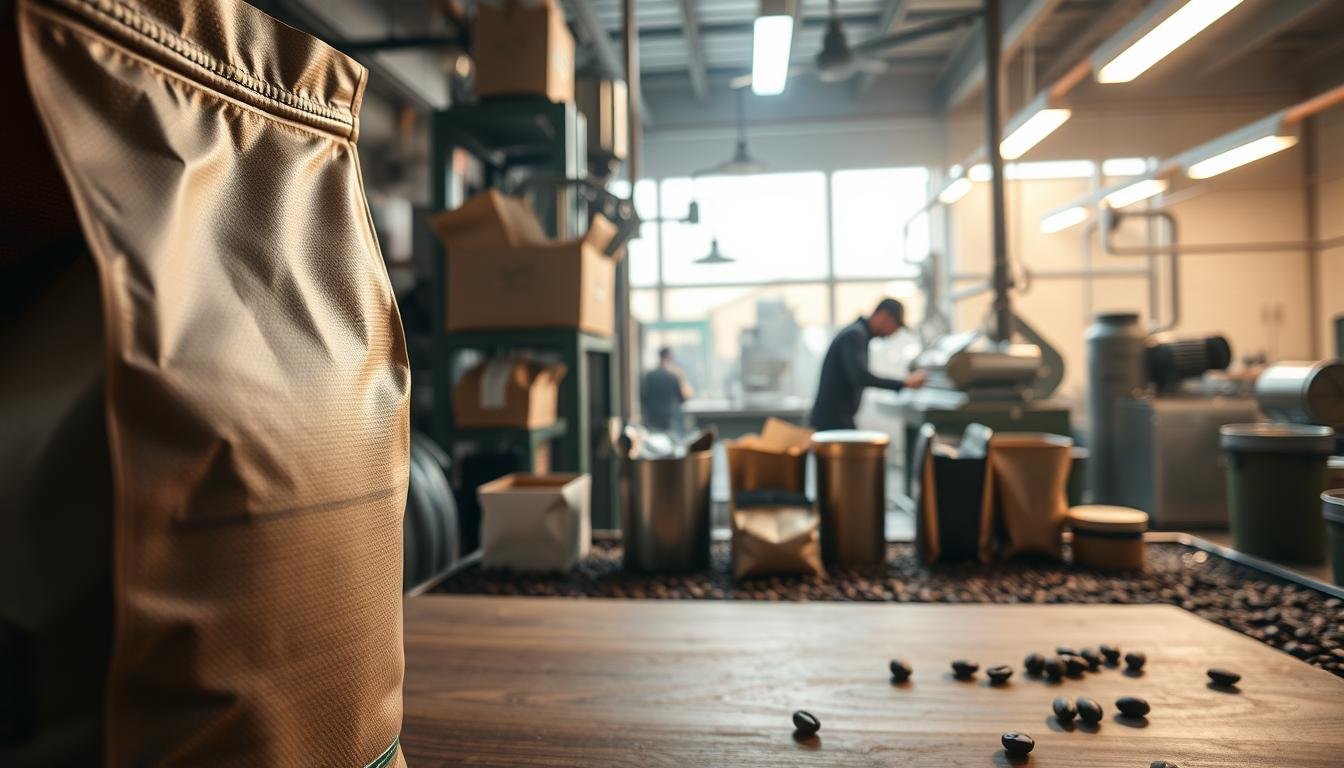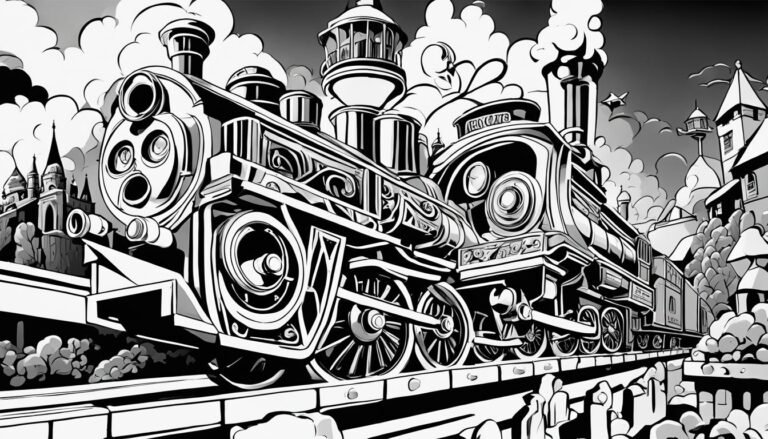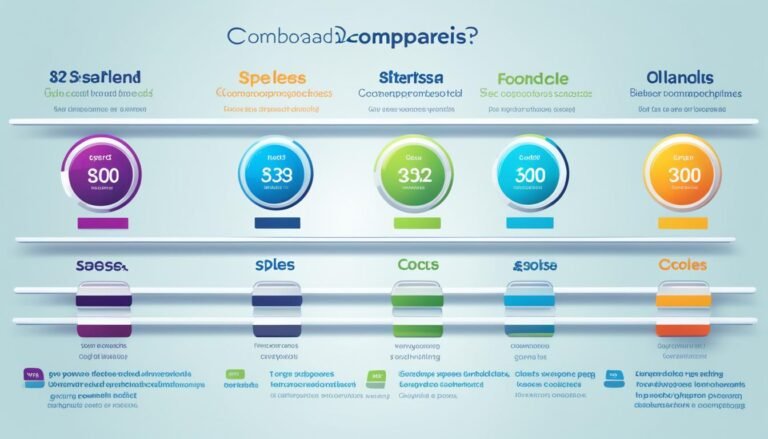Have you ever wondered what keeps your coffee beans fresh from roaster to cup? The Wintech packaging of coffee beans is far more complex than a simple bag or container—it’s a sophisticated science that preserves every nuanced flavor and aroma.
In the global coffee trade, where coffee ranks as the second most important raw commodity after crude oil, packaging of coffee beans becomes critical. Wintech, a leader in coffee packaging solutions, understands that protecting these precious beans requires advanced technological approaches that go beyond basic storage.
Packaging of coffee beans isn’t just about containment. It’s about creating an optimal microenvironment that shields delicate beans from oxygen, moisture, and light—the three primary degradation factors that can transform your premium roast into a bland, stale disappointment.
Key Takeaways
- Packaging of coffee beans is a sophisticated scientific process
- Proper packaging protects against flavor degradation
- Coffee bag valves play a crucial role in maintaining freshness
- Sustainable coffee packaging is becoming increasingly important
- Advanced Packaging of Coffee Beans techniques can significantly extend coffee shelf life
Importance of Packaging of Coffee Beans for Freshness and Quality
Coffee enthusiasts understand that preserving the perfect flavor and aroma requires more than just selecting high-quality beans. The Packaging of Coffee Beans plays a critical role in maintaining the integrity of whole bean storage, protecting your precious coffee from environmental threats.
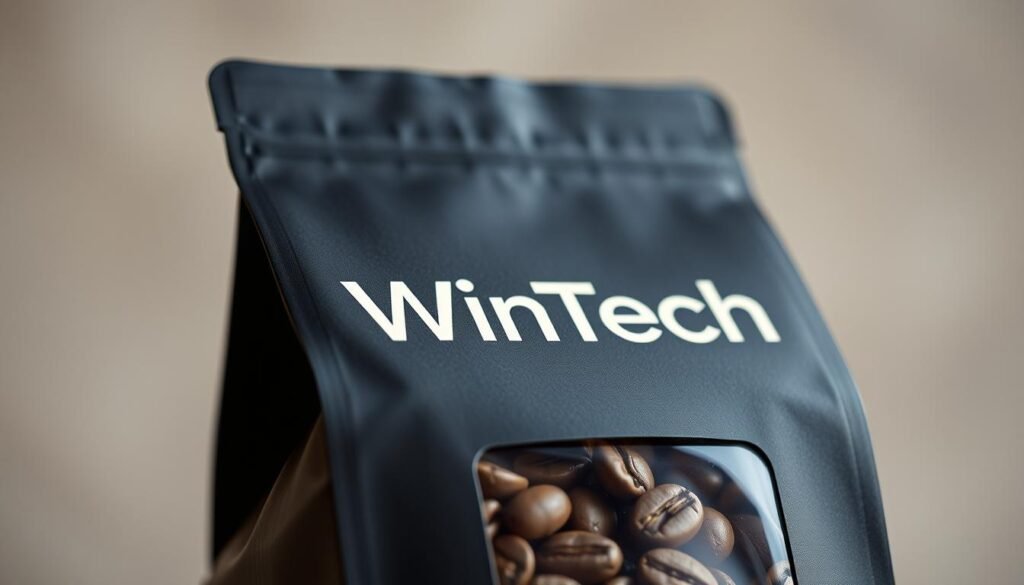
Moisture, oxygen, and light are the primary enemies of coffee quality. Vacuum sealed coffee containers provide a robust defense against these elements, ensuring that your beans remain fresh from roasting to brewing.
Understanding Coffee Bean Preservation
Proper packaging extends beyond simple protection. Airtight coffee containers create a controlled environment that prevents flavor degradation and maintains the bean’s essential oils.
- Prevents oxidation of coffee beans
- Blocks moisture penetration
- Protects against external odors
- Maintains original flavor profile
Materials in Coffee Bean Packaging
| Packaging Material | Preservation Effectiveness | Cost |
|---|---|---|
| Aluminum Bags | High | Medium |
| Kraft Paper Bags | Low | Low |
| Vacuum Sealed Pouches | Very High | High |
Designing Effective Coffee Packaging
Modern coffee packaging incorporates innovative features like one-way degassing valves that release carbon dioxide while preventing oxygen entry. These design elements are crucial for maintaining the beans’ complex flavor characteristics.
By investing in high-quality, vacuum sealed coffee containers, you protect your coffee investment and guarantee a superior brewing experience every time.
Best Practices in the Packaging of Coffee Beans
Coffee packaging has evolved dramatically in recent years, becoming a critical component of coffee freshness preservation. Modern roasters and manufacturers are implementing sophisticated techniques to protect the delicate flavors and aromas of specialty coffee.
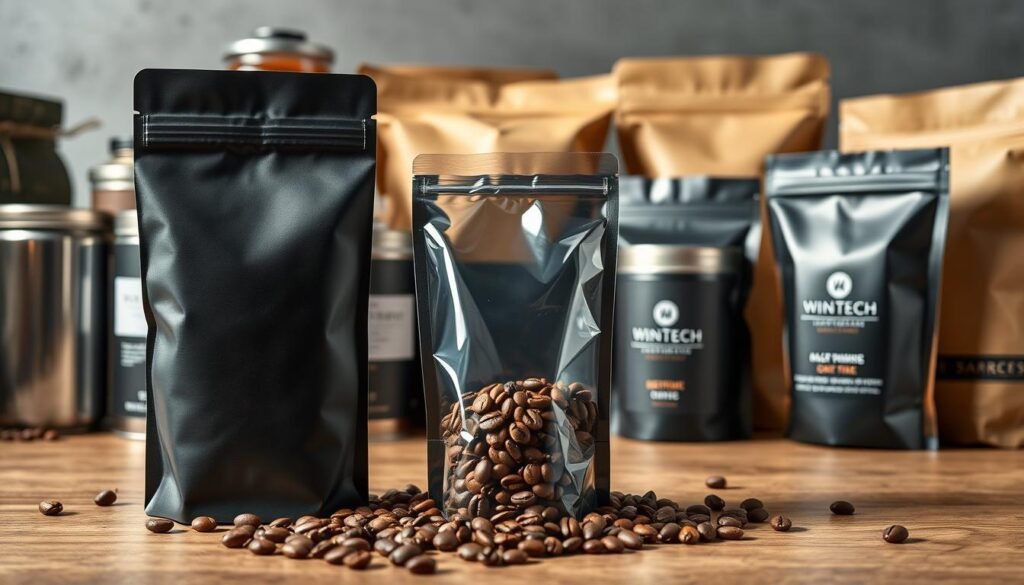
The packaging of coffee beans now goes far beyond simple storage. Cutting-edge approaches have transformed how coffee maintains its quality from roasting to brewing.
Innovative Techniques in Coffee Packaging
Specialty coffee packaging now leverages advanced technologies to ensure optimal preservation. Key innovations include:
- Modified atmosphere packaging that removes oxygen
- Valve-sealed bags for coffee degassing process
- Multi-layer barrier materials preventing moisture intrusion
Silica gel packets are frequently included in coffee shipments as an additional moisture control measure, helping maintain the beans’ pristine condition during transportation.
The Environmental Impact of Coffee Bean Packaging
Sustainability has become a crucial consideration in coffee packaging design. Manufacturers are now focusing on:
- Recyclable packaging materials
- Biodegradable coffee bags
- Reduced plastic usage
| Packaging Type | Environmental Impact | Preservation Effectiveness |
|---|---|---|
| Traditional Plastic | High Waste | Moderate |
| Compostable Bags | Low Waste | High |
| Recyclable Materials | Minimal Waste | Very High |
By prioritizing both coffee freshness preservation and environmental responsibility, modern packaging solutions are setting new standards in the specialty coffee industry.
Future Trends in the Packaging of Coffee Beans
The landscape of packaging of coffee beans is rapidly evolving, driven by technological innovations and changing consumer expectations. You’ll discover that modern coffee packaging is no longer just about protection – it’s about creating an immersive experience that speaks to quality, sustainability, and transparency.
Smart packaging technologies are revolutionizing how we approach the packaging of coffee beans. Emerging solutions now include moisture and temperature sensors that provide real-time data about bean freshness. These advanced systems allow coffee enthusiasts to track their product’s journey from roaster to cup with unprecedented precision.
Technological Breakthroughs in Packaging
Nitrogen flushed coffee bags represent a cutting-edge approach to sustainable coffee packaging. By removing oxygen and replacing it with nitrogen, these innovative bags dramatically extend shelf life while preserving the delicate aromatics of premium coffee beans. Your favorite roasters are increasingly adopting this technology to ensure peak flavor and quality.
Consumer-Driven Packaging Innovations
Today’s coffee consumers demand more than just great taste. They want packaging that reflects environmental responsibility and provides complete transparency about bean origin, roast date, and sustainability practices. The packaging of coffee beans now serves as a storytelling platform, connecting consumers directly with the intricate world of coffee production.
Sustainability at the Forefront
The sustainable coffee packaging movement continues to gain momentum. Brands are investing in compostable materials, reducing plastic use, and creating packaging solutions that minimize environmental impact. You can expect to see more eco-friendly packaging designs that not only protect coffee beans but also contribute to global sustainability efforts.

